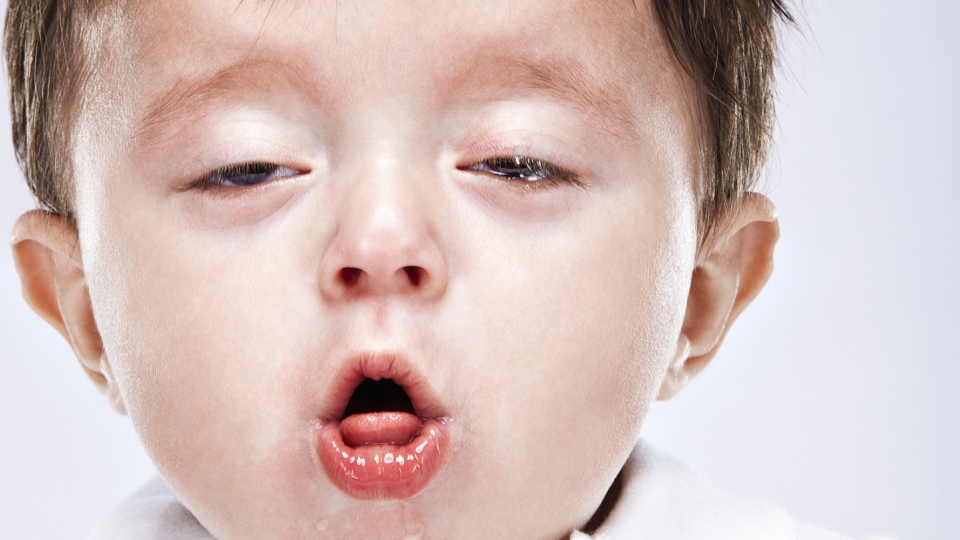


Whooping cough, also referred to as pertussis, is a serious infection of the respiratory tract (breathing tubes and lungs) that is caused by pertussis bacteria. Toxins are released by the bacteria that cause swelling of the airways and damage the cilia. Pertussis causes fits of violent coughing. It is especially harmful in young babies, in whom it can even be fatal. Read on to know more about its method of transmission, symptoms, diagnosis and treatment.

The pertussis bacterium is spread from one person to another in droplets that are airborne or by having direct contact with nasal or throat discharges infected with the bacteria. Sneezing and coughing are the common methods of transmission. After getting infected with the pertussis bacteria, a person may develop symptoms between 5-10 days, thoughsymptoms may appear even after 21 days of initial infection.
The person who has the infection remains contagious from 7 days after getting infected from the pertussis bacteria up to 1 month post the appearance of spasms of coughing. However, the most contagious period is the catarrhal stage.
In case an outbreak of pertussis has occurred, it is recommended to keep children who are uninfected (particularly those who have not received the vaccine) away from source of infection till contagious period is over. Similarly, children suffering from whooping cough should not attend daycare or school till the time they are not infectious.
After discussing "How is whooping cough spread?" let’s discuss signs and diagnosis of whooping cough.
The first stage of pertussis is referred to as catarrhal stage. In this stage, which lasts from 1-2 weeks, the symptoms are similar to infection of upper respiratory tract. These are:
During this stage, patients may think their illness to be common cold and are not aware that their symptoms are due to infection with pertussis bacteria.
Gradually, the cough becomes severe and after 1-2 weeks, second stage starts, which is referred to as paroxysmal stage. During this stage the diagnosis of pertussis is usually suspected. Following symptoms are present during the second stage:
The third stage of pertussis is referred to as the convalescent or the recovery stage. In this stage there is gradual recovery. The paroxysms of cough become less and it disappears over 2-3 weeks. But, paroxysms of cough may recur due to subsequent infections of the respiratory tract afterwards.
Diagnosis
When the usual symptoms of pertussis are present in a patient, the physician can make the diagnosis by taking the clinical history of the patient. However, the symptoms of the disease and its severity may vary in different persons. Lab tests can be done in cases where diagnosis is uncertain or when a physician wants to confirm a diagnosis. Diagnosis can be established by culturing the bacteria Bordetella pertussis from secretions of the nose. Another test to diagnose whooping cough is the PCR (polymerase chain reaction) test in which genetic material of the bacteria is identified in the nasal secretions.
How is whooping cough spread? You already know the answer.But how to treat and prevent it?
Treatment
Antibiotics are given to treat whooping cough. They most effectively reduce the severity of the disease when they are given during the initial stages. When they are given during the later stages, they may reduce the spread of bacteria but may not decrease the severity of disease symptoms.
Antibiotics are also prescribed for secondary infections if they have occurred. Preventative (prophylactic) antibiotic therapy may be advised for other family members to prevent spread of whooping cough.
Apart from antibiotic therapy, supportive care is provided to the patient, which involves providing a comfortable environment to the child. This includes:
A humidifier should be used to moisten and warm the air. It helps in reducing spasms of coughing and soothing airways. Making the child sit in a steam-filled bathroom is also beneficial.
Medicines to suppress cough are not beneficial in treating pertussis.Treatment of severe cases of whooping cough may require hospital stay. This is commonly needed in infants below 6 months.
Treatment given in hospital includes:
Prevention
Young children and infants are commonly affected by pertussis but the disease can be prevented by immunization of the children by pertussis vaccine. This vaccine is commonly given combined with diphtheria and tetanus vaccines. (The P in the DTaP vaccine that is routinely administered to children and “p” in the Tdap vaccine which is given to adults and adolescents is pertussis).
For maximum protection from whooping cough, children should get 5 DTaP shots. The initial 3 shots are given at two, four and six months of age. The 4th shot is given between 15-18 months of age. The 5th shot is given at 4-6 years of age. A Tdap booster should be given to preteens at 11 or 12 years and adults who have not received Tdap as a teen or preteen should receive one dose of Tdap.
Vaccines in adults are given to prevent the transmission of bacteria to infants who have the greatest risk. Adults should get a booster dose if:
Boosters must also be given to other individuals who are prone to develop pertussis and are at high risk of developing severe disease or complications, for instance, those who have immunodeficiency, congenital heart disease or chronic conditions of the respiratory tract.